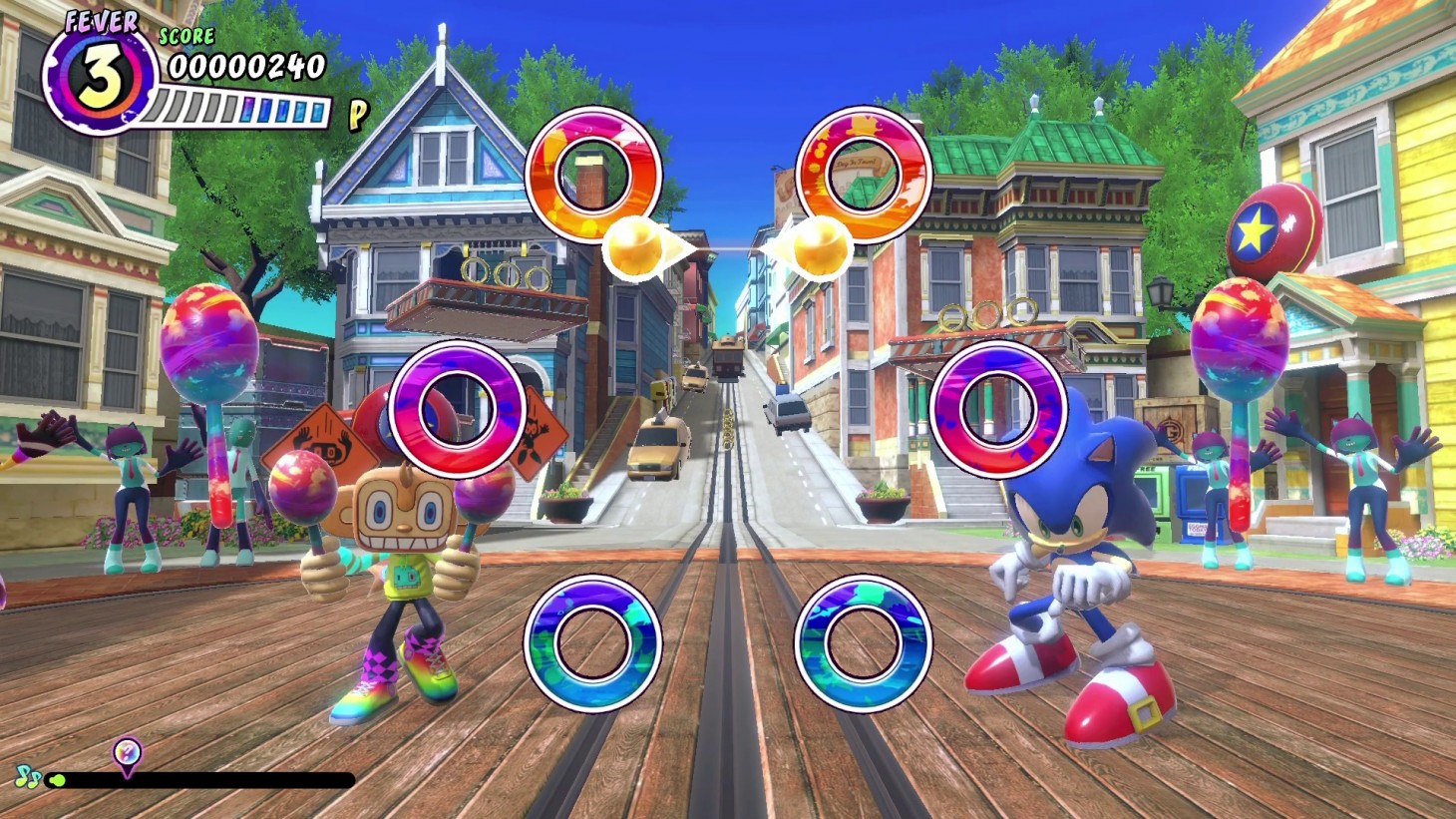
Adventure awaits in the Grandia HD Collection.
March 28, 2024
Reign supreme in a supreme game: Unicorn Overlord.
April 28, 2024Shake things up in Samba de Amigo: Party Central.
Years ago, I was at one of my first anime conventions. One of the convention rooms was dedicated to video games and had a variety of (at the time) current, multi-player games. Among the 2D fighters and taped down DDR dance pads, there was a station with a Dreamcast and Samba de Amigo. I watched two people shake the maraca controllers for a few minutes before venturing off to the next part of the convention. It was a brief yet impactful moment in time. This convention was in the actual calendar year 2000, but I remember that vignette clearly. Those few minutes watching two other con-goers shake maracas is what lead me to discovering Samba de Amigo: Party Central on the Nintendo Switch. Remembering the fun that those two seemed to be having was enough for me to pick this a motion-based rhythm game that seemed to slip under most gamer’s radars.
I never played the original arcade or Dreamcast edition, but it’s easy to see what’s required in Party Central. Once you start the game, you’ll likely select Rhythm Game, select one of 40 songs, and get to either shaking the Joy-Cons or tapping controller buttons to different angles to the beat. There are six rings arranged in a hexagon and spheres come out from the center of the screen. Simply match the spheres to the beats/circles and boom: you have the basic idea of Samba de Amigo. Along with shaking, there are times you have to strike a pose, follow an on-screen prompt, or slide a cursor. Finally, during the midway point of any track, a sphere with a question mark will pop up. Hitting this will cause a random effect ranging from quicker tempo, to needing to strike multiple poses in a row, to running in place. If you succeed, then you get extra points. Once the song ends, you’ll be given a score, a rank, experience points, and money. The money is used to buy new costumes and accessories for your Amigo. Higher experience unlocks new things to purchase.

Another game mode is StreamiGo. In this mode, players need to complete missions given by various opponents so your Amigo can become the most famous online streamer. Fulfilling the mission objectives earns you more followers. It’s a modern take on today’s social media landscape, but it doesn’t have any of the toxicity. The missions themselves can be tricky, so I didn’t bother too much with them. It was more fun to play the standard rhythm game since it had multiple difficulty and accessibility levels. Party Central also features two player couch play and different online modes.
Music is an objective topic, but I’m confident that everyone will find a few tracks that serve as their go-tos. Of course, some of the songs have been edited to warrant the game’s “E” rating. Hearing the “kid version” of “Bang, Bang” by Jessie J, Ariana Grande and Nicki Minaj is jarring for someone who knows the real version. But, I digress. Some of the songs were so catchy that they ended up on my gym playlist. One of the criticisms I saw was that there weren’t enough Latin-inspired songs available. Your mileage may vary on this. Personally, I found the the selection to be great. There were a few clunkers, but those same clunkers might end up being your favorites. One thing everyone will agree on is that the graphics are great. They’re bright, colorful, and vibrant but never distracting. Seeing how the music stages blossom with more colors as more points are earned adds to their appeal.
The biggest question is whether to play with the motion reading Joy-Cons or the standard controller. There are pros and cons to both. With the Joy-Cons, you feel like you’re shaking smaller versions of the arcade/Dreamcast original maracas. Sadly, the input can be finnicky. It’s undeniably frustrating when playing with the Joy-Cons and knowing damn well you hit a note, only to see your combo count go back to zero. Think of an early Wii game and you’ll get an idea. The standard controller is more responsive, but it can get boring. I recommend trying both ways, alternating with your favorite songs to see what works.
Games like Samba de Amigo: Party Central have a lot of staying power. They’re great for killing a few minutes, great for gatherings, and great for taking a break from more involved games. Therefore, playtimes will vary greatly. It’s one of those games I’ll keep forever because it’s so easy to pop in and play, yet difficult to master. I recommend it to all Switch owners looking to play something that doesn’t do anything too drastically different but still retains an enjoyable vibe and is easy to access.
Overall, 7/10: Samba de Amigo: Party Central is a nostalgic music game for those that remember Dreamcast days and it’s modern day soundtrack makes it great for new players.





